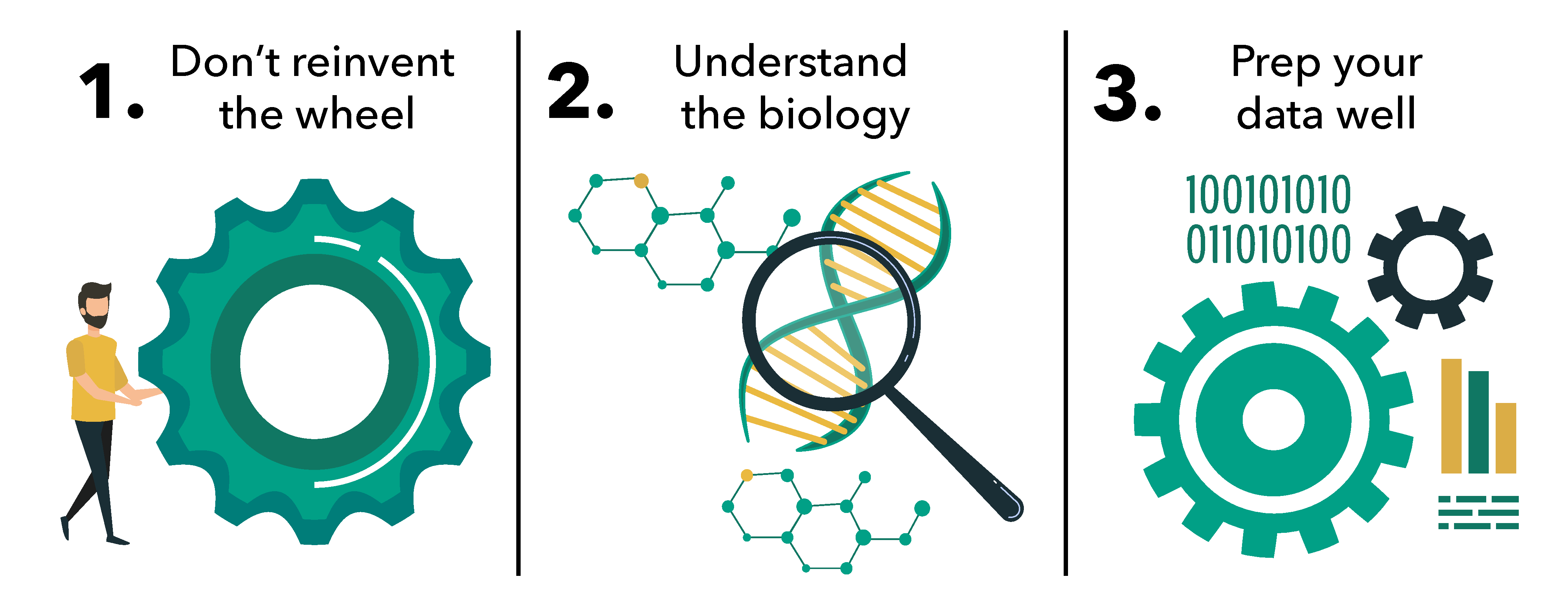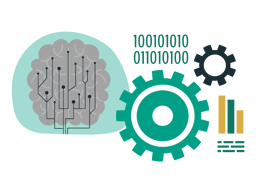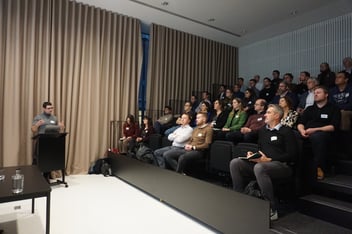Three best practices for applying machine learning in the life sciences
It has only become easier to apply artificial intelligence (AI) and machine learning (ML) to biological questions – even without a deep knowledge of data science. However, with this great potential, comes some potential pitfalls.
In our experience, the most important prerequisite for using AI is to know when and where which algorithms are applicable. Making sure that your data is “AI-ready”, and that you’re applying AI in the correct way, ensures that you get real, data-driven insights rather than biased output based on data artefacts. And all of that requires the right expertise, an appropriate skillset, and an understanding of potential pitfalls and best practices for applying AI…
Common pitfalls in applying AI
One of the greatest challenges in applying artificial intelligence and machine learning stems from the great promise that this buzzword technology holds. Everybody wants to do something with AI, and it’s definitely proven its value – but nonetheless, AI is not a magical tool. In other words, one major pitfall is not managing your expectations, and expecting magical results.
That being said, although AI still has many limitations and challenges, small adaptations in your approach can have a big impact on the usefulness of AI. Adjusting the way that data is stored and collected, improving overarching data management strategies, and adapting algorithms to suit the input data can have a dramatic effect on the applicability of AI. That’s why getting input from experienced AI experts, with deep understanding of biological data, like the team at BioLizard, can give a big boost to the effectiveness of adopting AI when you’re starting out.
Another common pitfall that we see is overestimation of how easily and accurately AI can spit out flashy results. As with all analysis methods, it’s important to consider where your data comes from. If your experiment was conducted in a confined environment or in a way that is not applicable to the question that you want to answer, applying AI won’t be able to change the original parameters of your data collection or make your data universally applicable. However, in our experience, not having the perfect data is a challenge that can often be overcome by using the vast amounts of public data resources that are now available. It’s just a matter of finding the right input data to match your scientific question!
One last common pitfall and misconception about applying AI and ML is that it will be too expensive! However, experimenting with AI doesn’t have to be costly. Just like in the wet lab, you can start with small proof of concept studies to see how and where AI will add value to your organisation. BioLizard often assists clients with this by examining their unique situations and pinpointing key areas that could be streamlined using ML. If everything is already state-of-the-art and further application of AI isn’t useful, BioLizard provides that honest feedback. However, if there are some opportunities for improvement, we can make an effort versus benefit analysis to see where the low-hanging fruits are, and help clients decide in which areas AI can add the most value.
Then, when we get to the actual application of AI and ML, we always follow a few best practices…
Best practices for applying machine learning

1. Don’t reinvent the wheel.
There are a lot of algorithms and public resources out there – so you should make use of them! BioLizard makes sure to stay up to date with the available tools, so that whenever we’re working on a new use case, we can efficiently select what worked in similar circumstances and build upon that – rather than creating everything from scratch. We have also developed our own platform that encompasses all of our code libraries and lessons-learned, so that we can efficiently set up bespoke AI algorithms to answer new biological questions.
2. Understand the biology.
It’s important to understand what information is key and/or limiting, and to integrate that into algorithms. Thanks to the complexity of biological data, it’s almost never possible to capture a perfect picture of your whole population of interest. That means that we’re almost always sub-sampling from smaller, and potentially biased sub-populations. In turn, this means that it’s important to understand the limitations of what your data can tell you. Because BioLizard has combined expertise in both biology and ML, this makes us an ideal partner for leveraging both types of knowledge to create truly accurate and applicable algorithms.
3. Prep your data well.
There are a lot of intersections between effective use of ML and effective data management. In fact, an analysis of your data management strategy is often a prerequisite for applying AI. Usually, to get the best insights out of an ML application, you will want to make use of as much data as possible. In order to do that, it’s important to have a standardised set of data with limited biases. Taking preventative measures to limit data bias within your data management strategy will reduce the amount of pre-processing that is needed later on when you want to apply AI. Likewise, if you have accumulated a lot of different data types, it’s essential to standardise and manage it well if you want to integrate different forms of data in your eventual algorithms. For more information on the ‘how’s and ‘why’s of data management, you can check out our last blog series.
Let’s get started!
One of the great benefits to partnering with BioLizard is that we come into every project with an intimate knowledge of all of the potential, but also all of the pitfalls, for applying AI to biological data. We don’t just sell a service – we provide personalised solutions that fit the unique requirements of your life sciences company. And, when applying AI, we don’t just cut and paste algorithms. We can also think along with our clients on a strategic level to ensure that these high tech tools will provide true value and new biological insights.
 If that sounds like a fit for you, reach out to us today!
If that sounds like a fit for you, reach out to us today!
Get in touch with BioLizard to start applying AI to your life sciences research.



